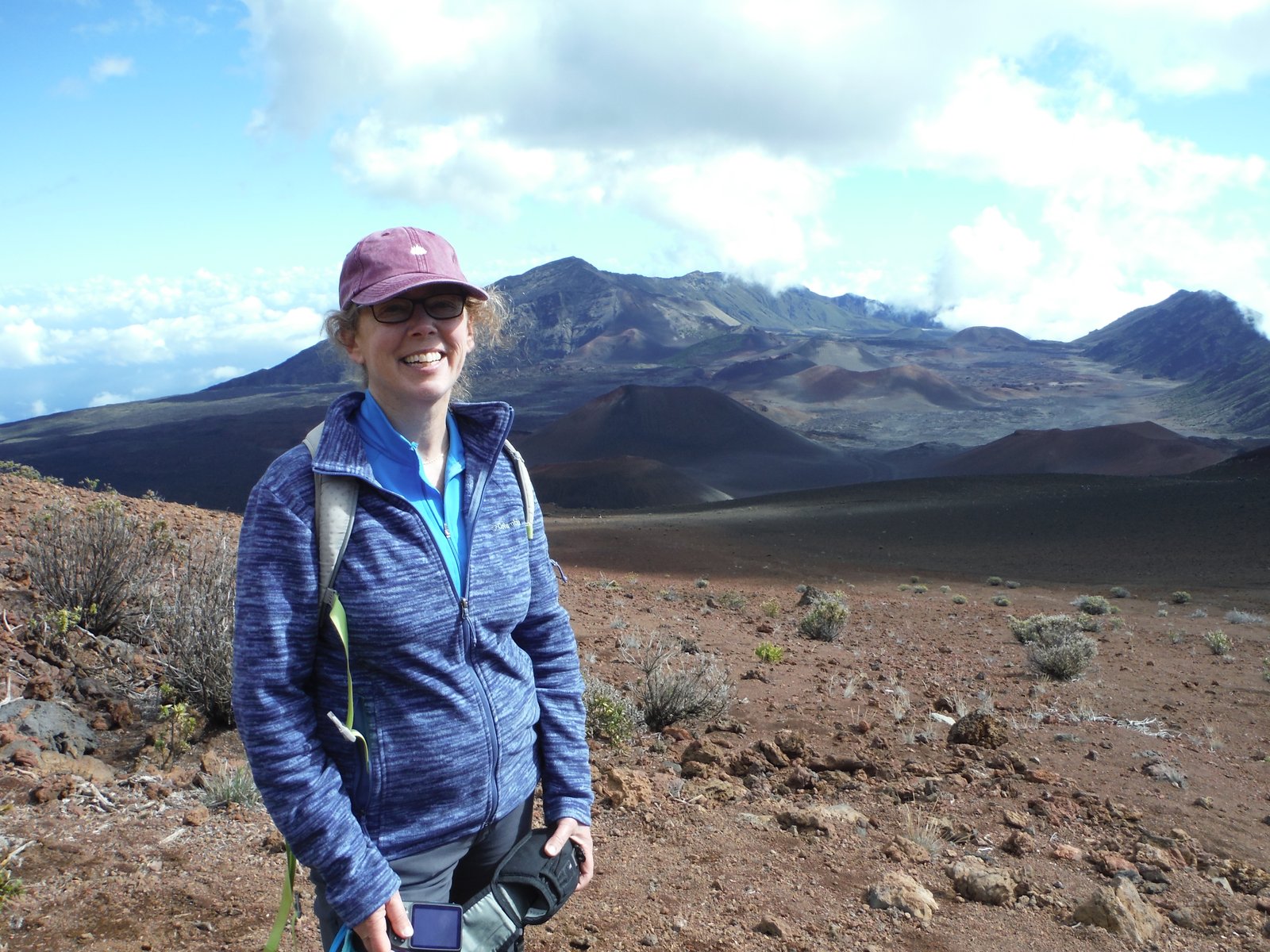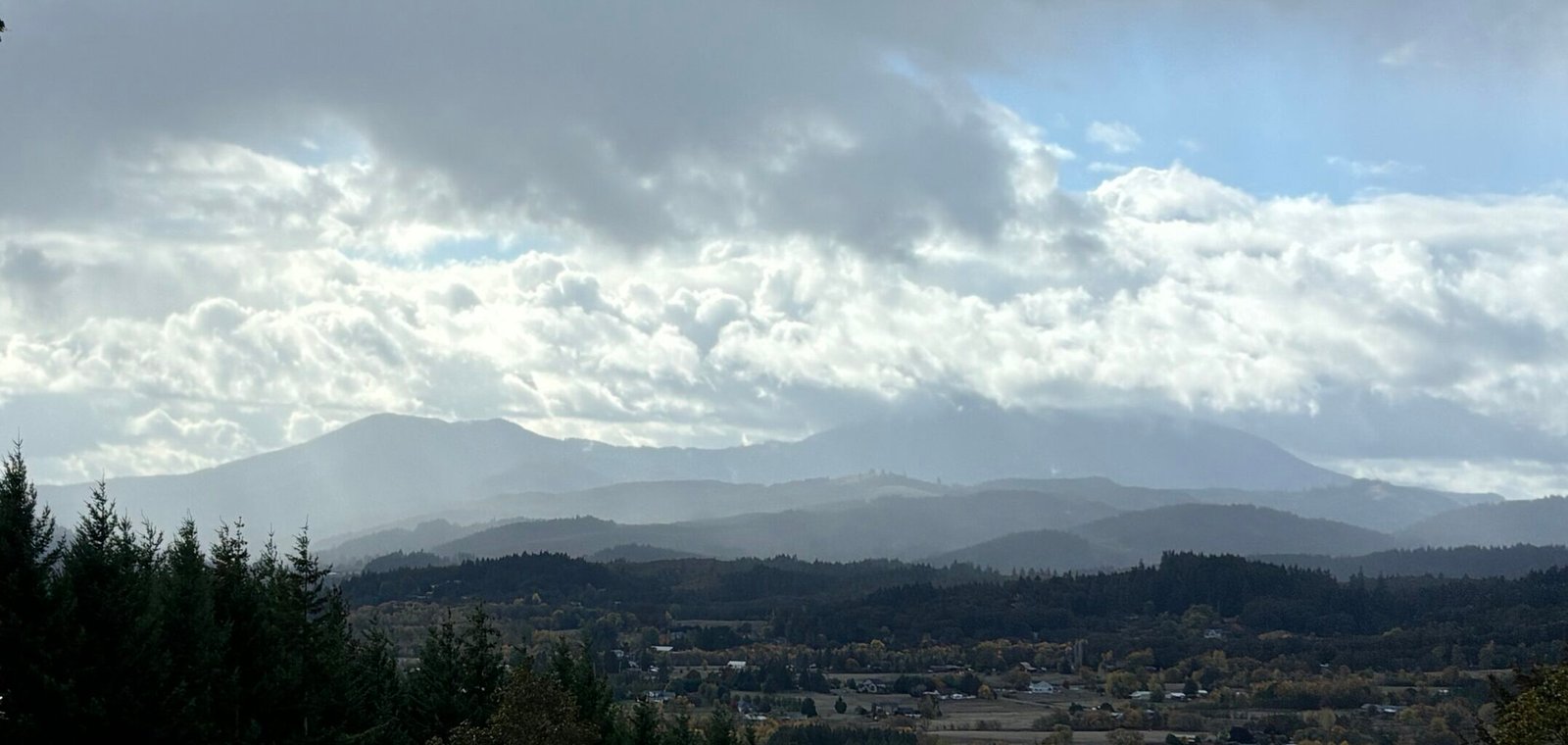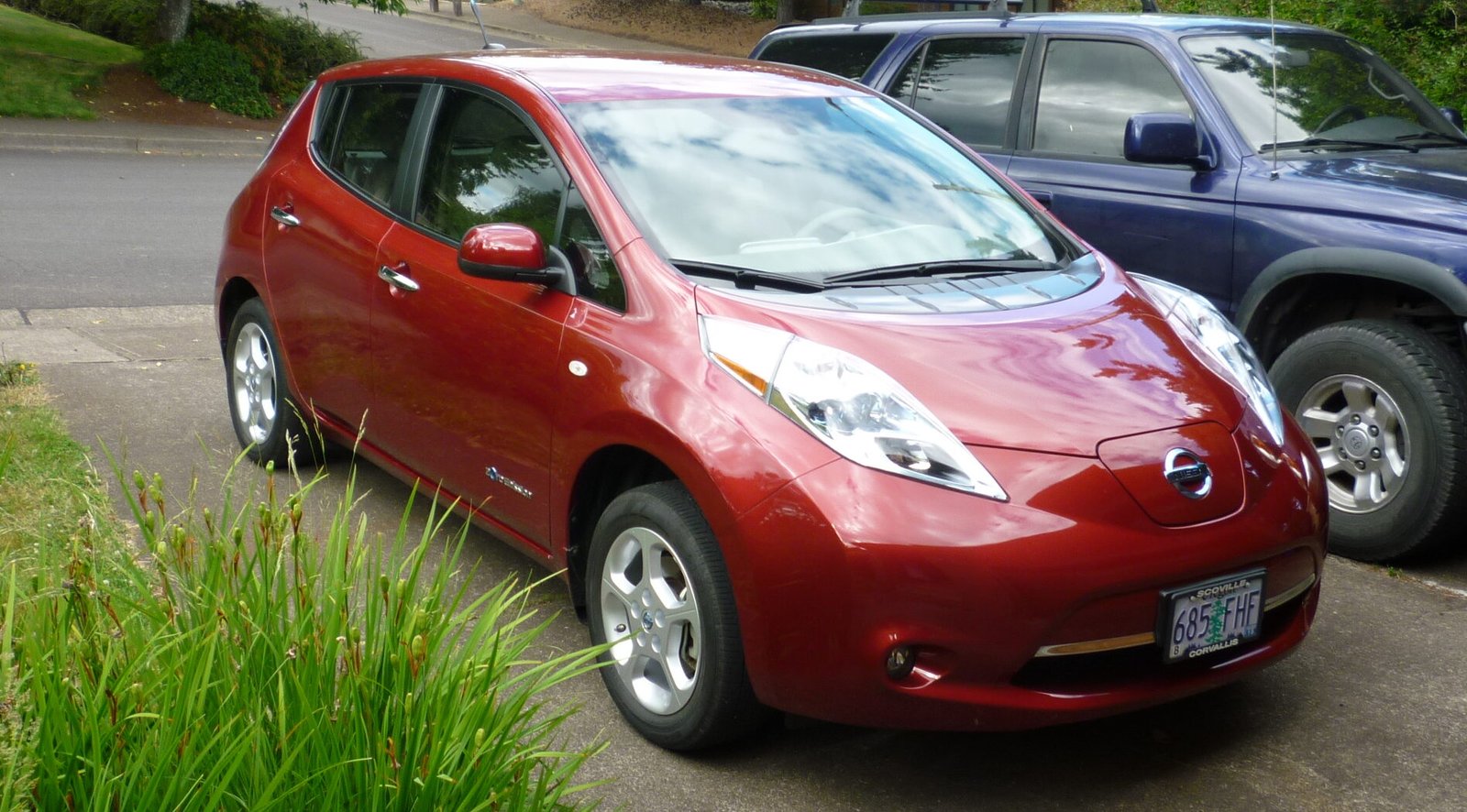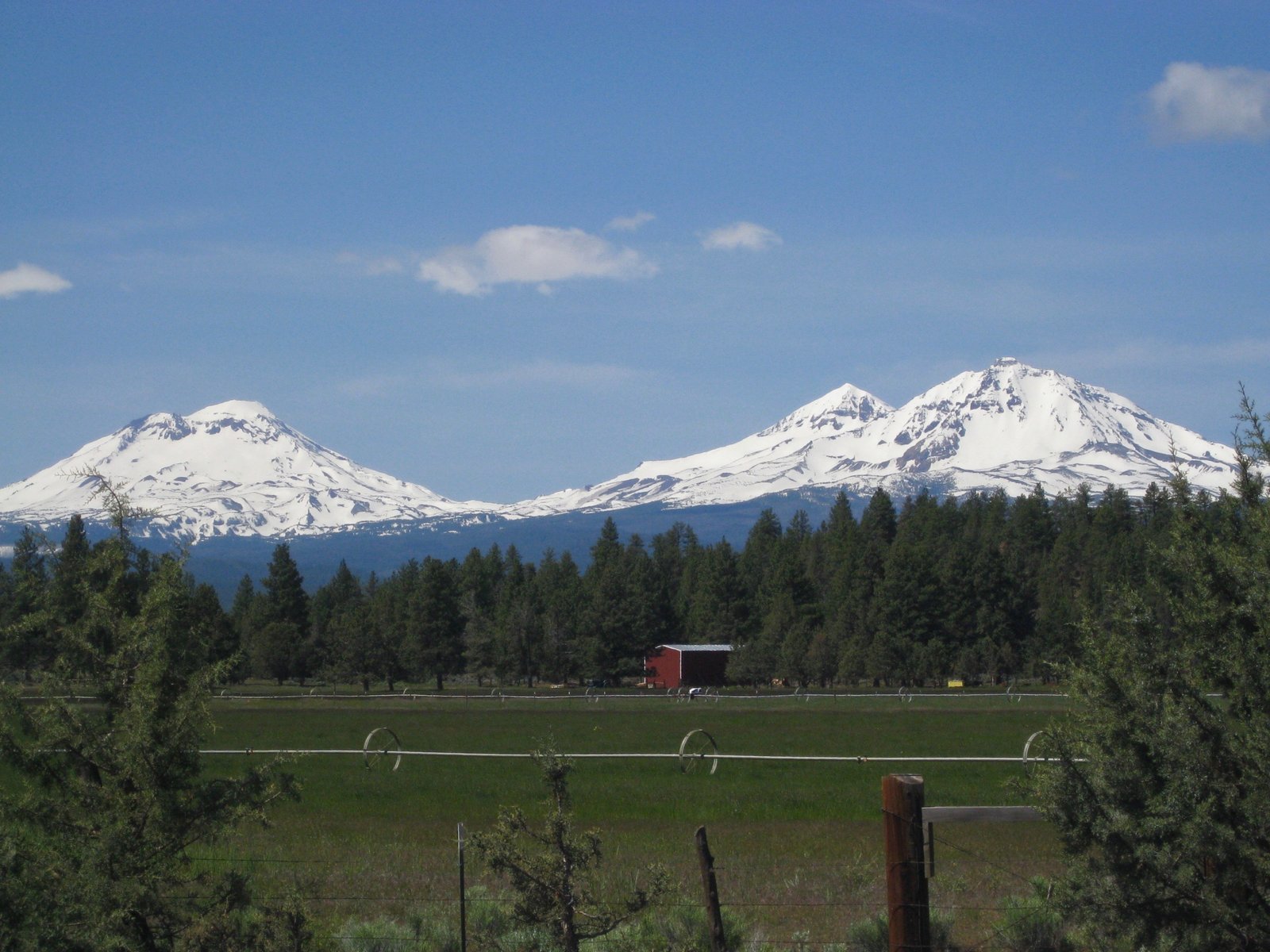I bid you farewell, and what’s next
There are many extraordinary people who are going to continue to lead the fight to protect our climate in the coming years. While I will remain involved in this work, it’s time for me to close Power Up for Climate Solutions. It became clear to me some months ago that the world, physically, biologically, socially, culturally, technologically and politically has changed so much in the last few years that the part I was endeavoring to play in promoting climate action had become outdated. The US election results provided the final confirmation that it’s time for a new direction. I thank you for joining me in my efforts to share ideas, tools and inspiration to take action on climate. Going forward, I invite you to follow my new blog at wiseonearth.com to see what I’m getting up to.
I will leave you with a few thoughts. I claim no special grasp of our predicament except that afforded by time and experience. I’ve been worried about climate change for at least 35 years. For the past 20 years, climate writing and advocacy have dominated my work life. In this time, our situation has changed in profound ways, opening up both extraordinary opportunities and extraordinary threats. Although no one can see the future, I can tell you what I see, and how I plan to respond going forward.
In 2013, when I got involved with climate advocacy, there was only one grassroots organization active where I live focused on climate. Journalists were still being taken in by fossil-fuel funded disinformation efforts, and climate scientists were being harassed, maligned, and attacked for simply for trying to do good science. A very sizable chunk of the American population, never a terribly scientifically literate people, were confused, disengaged, uninformed, or fully deceived about the facts. Clean energy technologies were so expensive that they were not a viable alternative to fossil fuels in most situations. No global climate agreement had been ratified by the world’s nations, and no major climate laws had been enacted in the U.S.
Today, all these things have changed. We now have more public acknowledgement of the threat, better and cheaper technology, and some real climate policy wins. There’s also been a huge blossoming of organizations and individuals doing great climate work. The niche I was trying to help fill providing ways to take simple climate actions is now quite crowded, in the best possible sense. I think it’s fair to say that the clean energy transition has begun.
However, climate scientists are more and more convinced that we are entering an era of worsening climate-change fueled disasters and increasingly deadly harms. The party taking power in the US is communicating it’s intent to reverse progress on climate. We are missing the window we had to contain greenhouse gas concentrations to levels consistent with a stable climate, successful agriculture, and stable ocean, wind, and ice patterns. The US election results will likely slow progress on a clean energy transition both nationally and internationally.
So, although the future is unknowable, here is how our situation appears to me: I don’t see a pathway for avoiding devastating climate harms in the coming decades. Greenhouse gas levels are still rising. We have started transitioning toward clean energy, but in the US and globally, it appears that progress will slow instead of speed up in the next few years.
Therefore, going forward, I’ll be shifting my efforts to focus on strengthening local systems to better weather the coming storms. I’m beginning to look for ways to help build and strengthen resilience in Corvallis and the Willamette Valley. In his new novel Sun House, David James Duncan refers to this as lifeboat work, and I am drawn to the image of community lifeboats to help us weather an uncertain and destabilizing future. This includes continuing to shift toward clean energy, re-localization efforts, community building, reducing consumption and waste, and emergency preparedness. I will also be looking for opportunities to support climate solutions at the local and state level, and to counter hate, xenophobia, and fascism.
Thank you again for your support, interest, and participation in the Power Up for Climate Solutions experiment. I am deeply grateful to you for joining me in this effort. If you’d like to follow my writing going forward, I will be blogging at wiseonearth.com, where I plan to share what I learn as I dive into lifeboat work. And if you have thoughts, ideas, or questions about resilience work, I’d love to hear from you!

Why you haven’t been hearing from me lately
My dear blog readers, I’m sorry I’ve been communicating so infrequently in recent months. I think I owe you an explanation.
It’s not that there is no climate news to share — haha, wouldn’t that be a nice change? It’s not because of any big drama in my life or at Power Up for Climate Solutions. I think a biggest reason I’ve been struggling to compose communications is the dramatic explosion in the quality and quantity of climate communicators, analysts, and activists in the 5 years since we founded Power Up for Climate Solutions. I find myself awed by many of the climate resources being produced today; I also feel uncertain about what I can add that’s unique and valuable.
This is a really great problem to have. Since 2018, we’ve seen a dramatic, heart-warming blossoming of the climate movement. Individuals and organizations have emerged, and they are doing great work and producing great content. New voices, organizations, podcasts, newsletters, and resources of all kinds are available, and established organizations like Natural Resources Defense Council and Union of Concerned Scientists are producing top notch climate analysis and actions as well. I’m incredibly happy about this, yet I find myself questioning what to post on this blog. So I thought I’d start something new: simply connecting you to my favorite people, resources and organizations.
I’ll start by recommending two:
“Talking Climate” is a weekly newsletter from climate scientist and communicator Dr. Kathrine Hayhoe. It began about 10 months ago, and all issues are accessible on LinkedIn; what I love about it is that each issue includes good news, bad news, and ideas for something you can do. It’s short enough to read in just a few minutes, and of course it’s free. You can find it and subscribe to it on LinkedIn.
Rewiring America is an organization founded to help America electrify everything. They have an extraordinary array of resources to help you learn about electrification and its crucial role in decarbonizing. They also have tons of tools to help you electrify your home and car, and reports on all aspects of electrification. Start by going to their Electrification Planner or use their IRA savings calculator to learn how much money you can get with the Inflation Reduction Act incentives. Or just go to their website and look around–it’s pretty impressive!
I hope you enjoy checking these out. Taking a little time each week or each month to learn about climate solutions is a great way to begin taking action. And if you have any favorite climate communicators or climate resources, please write back and tell me about them!
It’s go time for electric vehicles
We humans are terrible at seeing what’s coming, even when the signals are visible. So I’m here to give you some straight talk about electric vehicles (EVs): the transition to electric transportation is underway, and it’s time to jump on! Yes, there is some chaos and misinformation clouding the big picture on this. But for nearly everyone driving a gas car, choosing an EV for your next car purchase is within reach and will save you money and make you happier. And as a bonus, EVs will help us get off fossil fuels, reduce air pollution, and fight climate change.
I realize you may need some convincing. Just last week, I saw at least three false or misleading news stories suggesting that EVs are dangerous, bad for the climate, or doomed. Yet consider this: according to the International Energy Agency, 14% of new cars sold worldwide in 2022 were electric and sales are growing exponentially. Each year EVs have been getting better and cheaper, with more models, longer ranges, and a greater variety of options. The cost of fueling and maintaining an EV is much lower than for a gas car, and EVs are better for the climate than gas cars in every US state, even those without much clean electricity in their grids. One of the biggest underappreciated reasons to go electric is that from this day on, as EVs take over, fueling, maintaining, buying and selling EVs will get easier, and gas cars will become a burden, and may loose their value.
Here are four key things to know when considering your next car purchase:
EV sales are rising quickly and are reaching a tipping point in the U.S. In 2022, 5.7% of US car sales were fully electric, a 65% increase from 2021. By the 3rd quarter of 2023, 7.9% of new cars sold in the U.S. were EVs. These trends, along with the generous EV tax incentives enacted in 2022 in the Inflation Reduction Act, indicate the beginning of exponential growth of EV sales: If these trends continue, EVs will dominate new car sales in the U.S. by 2030, just seven years away.
As EVs become more abundant on our roads, prices and choices will improve, infrastructure to drive, fuel, maintain, repair, and re-sell them will become more accessible, and the opposite trends will occur for gas cars. Recognizing this now can save you from choosing a car that will become obsolete.
The benefits of going electric are underestimated. Every person I know who has gotten an EV in the last few years is extremely happy, and would not go back to gas. EVs are quiet, fast, powerful, cheaper to run, fun to drive, and better for the climate. Getting used to charging and learning your battery range are adjustments, but you are probably overestimating these issues, and underestimating how great it is to be freed from buying gas and paying for maintenance and repairs for an internal combustion engine. (I suggest choosing an EV that has a range of 250 miles or more.) According to an analysis by Consumer Reports, EV owners spend–on average–approximately 60% less on fuel than gas car owners, and half as much on maintenance and repairs.
Fears about battery life, reliability, and climate benefits have been stoked by fossil fuel interests who have spread disinformation to try to prevent the rapid transition to EVs. Very few–if any–of these alarming headlines stand up to careful scrutiny.
What to know about the cost of buying an EV: With EV prices falling and options expanding, a new, used, or leased EV is now within reach for many—possibly most– families. There is, however, a bit of chaos in the U.S. EV market right now, precipitated by the EV incentives passed as part of the the Inflation Reduction Act.
The law provides generous tax credits for buying EVs (both new and used). To qualify for credits, new EVs must meet domestic battery sourcing requirements. (These incentives are also income restricted, so are not available to the wealthiest Americans.) As a result, buyers and manufacturers have been scrambling to meet the requirements, and the IRS and Treasury Department have been scrambling to determine which EVs qualify. In addition, some states have additional incentives, so depending on where you live, your income level, and the EV you choose, your purchase price could lowered by up to $10,000.
There are several ways to determine which EVs qualify for these tax credits. One option is to go to the US Department of Energy’s website with the updated list of new and used EVs that qualify, as well as information about how to claim the credits. A second really great resource is Electric For All, where you can enter your location and discover all the EVs available and which tax credits (including state credits) are accessible to you. There are also credits up to $4000 to buy used EVs, and $7500 tax credits available to leasing companies to lower the cost of leasing an EV.
Leading EV makers, including Chevy, Hyundai, VW, Tesla, Ford, Nissan, and Volvo, are furiously working to build domestic supply chains for their batteries so buyers can get the tax incentives. The Department of Energy website and Electric For All are updated frequently and more and more models should be added over coming months.
Doing well by doing good: EVs really are a win-win. Today’s leading EVs are quiet, fast, powerful, much cheaper to run and maintain, super fun to drive, and protect owners from gas price shocks.
At the same time, they are a critical climate solution. The transportation sector is the largest source of CO2 emissions in the U.S., responsible for 2/5ths of domestic fossil fuel emissions. EVs have lower emissions than gas cars in every state, and as the percentage of clean electricity grows the climate advantage of driving electric will only increase. If you currently drive a gas powered car, one of the most effective personal climate actions you can take is commit to switching to an EV the next time you need to buy a car. You’re gonna love it!

P.S. I realize this is a long post, but even so, I left out some important information so as not to make it even longer! Below links to three things I didn’t talk about:
- Plug-in hybrid electric vehicles (PHEVs)
- The coming advantage of using your EV as a back-up power source during power outages.
- The large public and private investments in charging stations that will transform the US car travel landscape in the coming years.
The mostly overlooked, truly remarkable thing to celebrate
Most Americans are in a dark mood right now. Majorities say they believe the country is in decline, and I get it. The headlines are awful, providing a steady stream of stories about crises and horrors and threats. I am careful to limit my exposure to news so I don’t become overwhelmed. And yet, something miraculous and truly hopeful is happening and mostly going un-noticed: We’re at the beginning of a turn-around in US climate action that a year ago was unimaginable.
What am I talking about? First, there was the unexpected passage of the Inflation Reduction Act in August 2022. The new law is filled with incentives for individuals, businesses, and states to build and use green energy technologies. Immediately after it’s passage, businesses began announcing plans for big investments in clean energy across the U.S. Car and battery makers, the solar and wind industries, states and individuals started changing their plans to take advantage of what’s in the new law, and the prospects for rapid decarbonization brightened pretty much overnight.
Then in late 2022, the Biden administration released rules aimed at cutting hydrofluorocarbons and methane, two extremely potent greenhouse gases. This news, though barely reported at all, indicated serious efforts are underway to get at two separate categories of potent emissions.
Then, just last month, the EPA proposed the strongest-ever emissions rules for cars and trucks. Transportation is the single largest source of carbon pollution in the U.S, and these rules, if adopted as drafted, will dramatically speed the transition to zero-emissions transportation. The proposed rules would ensure that two-thirds of new cars and one-fourth of new heavy trucks sold in the US would be all electric by 2032—nine years from now!
Finally, this month the EPA released proposed regulations for tackling emissions from power plants. Tackling power plant carbon pollution is critical for containing the climate crisis, because carbon-free electric power is a pre-requisite for eliminating pollution from buildings, vehicles, and industry.
The proposal gives the power industry time and multiple options for cutting their greenhouse gas emissions, and is designed to withstand inevitable legal challenges. A preliminary analysis found that the EPA’s proposal would help the US power sector achieve an 82% reduction in power sector carbon pollution by 2040.
Individually, each of these steps would represent progress. Taken together, they are remarkable. There are a million things to worry about, and many ways the new climate law and proposed rules could be weakened, blocked, or reversed. We have not yet stopped drilling or exporting fossil fuels, which is also a necessity. Yet it is miraculous that we now have a chance, if all goes really well, to become the first major emitter in the world to get on track to meet our Paris Climate Agreement commitment. Now we can focus on making that possibility a reality.
Better late than never! My thoughts on the Inflation Reduction Act
Ever since August 16th, when President Biden signed the biggest climate bill in U.S. history into law, I’ve been considering what to say. So let me start with this: I’m amazed, grateful, and relieved. Why did it take me so long to post this? I was so stunned by this bill’s unlikely passage, and by how much major climate policy is contained in it, that it took me some time to digest this turn of events. I’ve spent ten years working for the passage of a national climate law of this scope and scale. I needed a moment to absorb this success, however imperfect. Then there’s the challenge of trying to summarize this bill–all 273 pages of it. How do I write something that does this moment justice?
You may know that I had given up. I wrote on this blog in January that “the odds of major climate policy being enacted by Congress in 2022 appear minuscule.” It feels like a miracle that the climate policies in this law somehow came back from the dead, like Wesley in the Princess Bride. (The climate provisions of the Inflation Reduction Act (IRA), crafted through years of collaboration, planning, persuasion, and compromise, were declared dead earlier this summer when Senator Manchin said he would not support them.)
Much has been written about how this bill was resurrected, and the concessions that were made. The fact remains that the IRA contains the largest and most consequential measures–by far–to reduce U.S. climate pollution in our country’s history. I am grateful to every person who worked for climate action, went to meetings, lobbied, protested, contacted their elected officials; each of us contributed to the passage of this law. I believe it marks the beginning of serious climate action by the U.S. government.
I’m guessing you may not realize the size of this win for the climate. I think we in the climate movement are so inexperienced with success that we don’t know how to respond when we make real progress. I know some climate activists are disappointed or angry at the concessions that were made, and I understand. But if you’re alarmed about the climate crisis, I suggest you take a moment to savor the potentially transformative impacts of this law.
Robinson Meyer writing for The Atlantic put it this way:
“On Tuesday, President Joe Biden signed the Inflation Reduction Act into law. It is no exaggeration to say that his signature immediately severed the history of climate change in America into two eras. Before the IRA, climate campaigners spent decades trying and failing to get a climate bill through the Senate. After it, the federal government will spend $374 billion on clean energy and climate resilience over the next 10 years. The bill is estimated to reduce the country’s greenhouse-gas emissions by about 40 percent below their all-time high, getting the country two-thirds of the way to meeting its 2030 goal under the Paris Agreement.”
I won’t try to provide all the details of the law–there are just too many. A few of the highest impact climate incentives in the law include:
–Extension of production and investment tax credits for clean electricity projects for 10 years
–Tax credits and incentives for EV purchases, including used EVs
–Tax credits for installing heat pumps, rebates for home retrofits, and financing for electrification of buildings
Other provisions include a fee for methane leakage, tax credits for carbon sequestration, and funding for environmental justice for disadvantaged communities, a green bank, climate-friendly agriculture, forestry, and conservation programs.
If you want to dig deeper into all that the IRA does, I have several suggested sources. Energy expert Dana Nuccitelli summarizes how the law’s provisions are expected to produce emissions reductions in Yale Climate Connections. The New York Times provides a good overview of the law’s provisions and impacts as well. If you prefer videos, Hank Green does a great job summarizing what the law does in this 22 minute YouTube “The Biggest Climate Bill of Your Life – But What Does it DO!?
Climate experts agree this law will matter, but the size of it’s impact will depend on how it’s enacted, and how people and businesses respond. I’m excited to say that I’ve created a page on our website and have begun gathering resources and information there on how the IRA can be leveraged to decarbonize your home, car, community, and state. The page will continue to expand for you to use and share.
Meanwhile, I hope you are taking a moment to celebrate, as I am. Next I’ll begin exploring what provisions in the law can help you contribute to a healthier, safer, more just and livable future.
The magic of talking
I’m going to suggest you do something that it took me years to do myself: talk about the climate crisis. If it’s something you care about, if it’s on your mind, if you are taking action, if you are worried about the future or excited about some new climate initiative, bring it up. Dr. Katherine Hayhoe, one of the world’s top climate scientists, says talking about it is the most important thing you can do to fight climate change, and I agree. But it can be hard to get started, so I’m going to lay out her argument here to inspire you, and suggest that you might be surprised how people respond (in a good way).
The first time I spoke up to a stranger about my climate work, I remember exactly where I was, and that I’d been doing climate advocacy for many years by then. I’m conflict avoidant, and I think I was afraid of eliciting a negative reaction. And I’m not alone: according to the most recent polling data from the Yale Climate Communication program, global warming is important to 71% of Americans, yet 61% say they rarely or never talk about it!
It’s vital that we speak up. In her new book Saving Us, Dr. Hayhoe asks, “What do we talk about? Things we care about…(our speech) displays what we are thinking about to others, which in turn connects us to their minds and thoughts. So if we don’t talk about climate change, why would anyone around us know we care—or begin to care themselves if they don’t already? And if they don’t care, why would they act?”
Speaking about climate signals to those in our communities that climate change matters, and this has incredible ripple effects. Conversely, studies have shown that self-silencing on climate leads us to consistently underestimate how much others care about climate change, and the more we underestimate other people’s climate worries, the more hopeless we feel. Speaking up breaks this cycle, empowering us to feel we can make a difference because we are not alone.
Another way to understand the power of talking about climate change is to remember that we are social creatures, influenced in a million large and small ways by our friends, families, and communities. Each time you talk about caring and acting on climate, you are sending a signal that encourages others in your social network to care and act. For example, someone is more likely to install solar panels on their home if others in their neighborhood have already installed them. This isn’t just because the panels are visible, it’s also because neighbors talk to each other about why they went solar, the installation process, and the benefits.
How do you start, and what might you say? Dr. Hayhoe suggests simply sharing personal stories about your concerns, experiences, and actions. She says, “What do people pay attention to most? In general, we tend to favor personal stories and experiences over reams of data or facts. In fact, when you hear a story, neuroscientists have found, your brain waves start to synchronize with those of the storyteller. Your emotions follow. And that’s how change happens.”
For my part, I believe that any kind of talking is a good start. Things I’ve recently been chatting about include the electric barbecue we just got because we are working on electrifying our home, my worries about the coming fire season, and the Banking on our Future Pledge I signed to support banks that do not invest in fossil fuel expansion.
One reason we self-silence about global warming is that we are afraid of a negative reaction. In my experience, this fear is largely unfounded. As long as I avoid preaching and instead talk about my own concerns or actions, people react positively. Often, they seem to feel heartened that they are not alone in their climate worries. The first time I spoke up to someone I barely knew about my climate advocacy work, she looked back at me and said, good for you! At the time I felt liberated to finally be open. Now I look back on that moment and imagine that I may have played a small part in nudging her toward becoming more engaged in climate action. It certainly didn’t hurt.
What’s next for Power Up for Climate Solutions
In 2022, Power Up for Climate Solutions will be providing resources for decarbonizing at home and in your community, and building resilience in the face of growing climate instability. We will be placing less emphasis on national and international climate policy action. The reasons for this shift are explained below, and we hope you will find our new direction useful in this time of growing accessibility of clean energy techologies and increasingly catastrophic and frequent climate disasters.
The world has changed dramatically in the last few years. Three truths about the moment we live in inspire our new focus on direct decarbonization and building resilience.
First, technological and economic barriers to a clean energy transition have lowered dramatically for Americans in middle and higher income brackets. The speed of technological and economic changes in clean energy has outpaced even optimistic predictions, and as a result, decarbonizing home energy and transportation is feasible at a personal and local scale for many of us. The impacts of climate change fall most heavily on those least responsible, harming the most vulnerable among us. We will be encouraging those who have some privilege to begin decarbonizing or to help others afford to do so.
Renewable resources generated only 19 percent of US electricity in 2020, but climate experts and modelers increasingly contend that a 100 percent renewable energy grid by 2050 is “not only feasible but can be done without any blackouts and at a lower cost than the existing grid” (Nikita Amir, “The US could reliably run on clean energy by 2050”). We will be providing tools for you to contribute to this transition.
Second, the climate crisis is here now. The speed of warming and the magnitude of climate-fueled disasters has touched everyone I know in recent years. In 2021 alone, the US experienced twenty major weather disasters as defined by NOAA. These included the February winter storms causing the power grid in Texas to fail; a severe and widespread drought in the West; the Bootleg and Dixie fires in California, so bad they generated their own weather; Hurricane Ida; the historic and deadly heat dome centered over Oregon, Washington, and Canada; and the Midwest derecho and tornado outbreak in December with more than fifty tornados. The imperative to strengthen our resilience in our homes, our food systems, and our communities to deal with climate instability is urgent.
Third, our political system has failed to head off a worsening climate crisis that threatens everything we need to survive and thrive. As Ezra Klein succinctly observed, “Decades of climate activism have gotten millions of people into the streets but they haven’t turned the tide on emissions, or even investments.” National politics in the US are more toxic and our culture is more divided than at any other time in my lifetime; the odds of major climate policy being enacted by Congress in 2022 appear minuscule. I believe the biggest opportunities for climate progress right now are in other arenas.
The resources we will be sharing will offer ways to contribute to the clean energy transition and guidance for building resilience at home and in your community. Examples may include individual, community, and business clean energy programs; regenerative agriculture; clean electrification resources; electric vehicle information; information on divestment from fossil fuel companies; and climate resilience resources. I hope that the resources and ideas we share will provide support and allow you to find ways to contribute to a clean energy transition, become more resilient in your home and your community, and help create a safer, more peaceful, more equitable world.
Guest Blog: What each of us can do about climate change
Most people are aware that climate has changed around the world. Fires in Greece, California, and Siberia; flooding in Belgium, China, Germany; and record-breaking temperatures in too many places to name.
The cause of all this: added gases to the atmosphere (called “greenhouse gases”) that hold heat close to the surface. Two of the worst are carbon dioxide from burning fuels, and methane, also called natural gas.
The U.N.’s Intergovernmental Panel on the Climate Crisis announced a “Code Red for Humanity” August 9, saying we have very little time to make changes to reduce the gases we keep adding to the air. I now always wear a red shirt to meetings, as a sign of the climate emergency we face.
We are in for a world of hurt. Global warming will worsen the problems of hunger, homelessness, education, immigration, mental illness, racial equity, social justice, and every other problem in society.
Meanwhile ad campaigns have promoted the idea that cutting fossil fuel use to reduce greenhouse gases means that we will suffer, lose jobs, hurt the economy, and be unable to live life as we wish. This is false: we will suffer much more if we do not create large-scale change. The actions below are all important, but require no change in your daily life.
What can we do? I want to suggest three actions for every one of us:
First, we must talk everywhere about the need to act on climate change. Although most people favor action, fewer than a third of Georgians had a conversation about climate last week. So please, make it a point to discuss it with someone every day. Call up a friend or relative. Post something on social media. Bring it up when you’re standing in line. Don’t be silent.
Second, we must share our concern with elected officials. Again, talk about it with these public servants. Write a letter or email. Call their office. Tweet about it, or retweet others. A state legislator once told me, “If three people in my District call me about the same issue, that becomes my issue.” When they don’t hear from us, they only hear from lobbyists.
Finally, we must join a larger group to take action together. Although we all benefit by reducing fossil fuel use in our daily lives, the actions of corporations and governments that employ millions have a larger impact on overall carbon emissions. We must all work together to influence their decision makers. I volunteer with Citizens’ Climate Lobby (cclusa.org) and can recommend it. Other climate groups include 350.org, the Sunrise Movement, Fridays for the Future, Extinction Rebellion, and Climate Reality. You can even join multiple groups!
Many many actions can help us reduce our emissions. Go to drawdownga.org for a list of 20 different ways Georgia can cut greenhouse gas emissions in half in just ten years, including building improvements and large-scale solar projects. Every step can help, but think as large as you can.
I want to close about the need for immediate action. What’s at stake is not nature, but people. Remember, this is Code Red for humanity.
A CCL member recently wrote, “If there are children in a burning building and I have the ability to save some of them, I have a responsibility to save as many as I can.”
Please join me in action.
Henry Slack is the Citizens’ Climate Lobby co-coordinator for Georgia, and a mechanical engineer. He originally wrote this for the Atlanta Friends Meeting (Quaker), then adopted it for a wider audience.
Note from Carla Wise: This essay expresses what I have been feeling and wanting to say more perfectly than I’ve been able to put into words. I’m grateful to Henry for giving me permission to re-post it here. Below are several links to climate actions and organizations to join in addition to Henry’s Georgia-specific links. Right now, the most urgent action you can take is to tell your Members of Congress to act now. You can use the easy #Call4Climate tool to do so!
Great organizations to support:
Power Up for Climate Solutions is back!
It’s good to be back! After five months off from climate advocacy following the train wreck known as 2020, our organization is coming back online. Thank you for sticking with Power Up for Climate Solutions during the break. I hope that you are feeling some sense of renewal and hope as we enter summer, as I am. Yet as the heat wave that smothered and scorched the Pacific Northwest inches eastward, I also feel a renewed sense of of the scale of the climate crisis we are facing and the challenges ahead. So with this clarity and sense of urgency, let me tell you about our organization’s next steps:
Power up for Climate Solutions will continue to focus on providing tools, information, and inspiration to help you engage in climate action. We will continue to emphasize actions that build political and societal will for enacting effective national climate policies while sometimes including personal and community actions. We remain committed to unifying around any and all fair and effective climate policies as long as they protect the most vulnerable among us.
We are bringing back our climate action invitations and our blog, with a new schedule. We will send you climate actions only when we have something really important you can do, so frequency will vary. Some months you may receive several actions, and some months you’ll receive none. This will allow us to send only actions we feel are especially impactful. The blog will come out six times a year instead of twelve. We will continue to have a social media presence on Twitter, Instagram, and Facebook, but with less frequent postings.
Starting this fall, we will be introducing a new initiative: Climate Circles. I’ll be offering these experimental circles to anyone interested in bringing a small group of friends, family, or colleagues together for monthly gatherings to connect, learn, and take action on climate solutions.
Climate circles are intended to be fun, flexible, and focused on learning something and taking action at each gathering. The format will be adaptable to meeting virtually or in person, and will be flexible to meet the needs of each group. This program will start small, but in time I hope to make it available to anyone who is interested.
As I write to you, it’s a much more uncertain time for climate action than it’s been in a very long time, and that’s a good thing. Anything (or nothing) is possible. We have the largest majority of Americans ever who are worried about the climate crisis and want government action. We have a president who understands the science and the urgency. We have ever-improving technological and policy tools to undertake rapid decarbonization and ways to do it that will be good for people. At the same time, we have a divided government and problems with misinformation and mistrust. We have challenging divisions within the climate community and a vocal and powerful minority fighting hard against a clean energy transition. I hope you’ll stay with us. I’m excited to get back to work. Let’s make rapid decarbonization and solving climate change the story of the next decade.
We are taking a winter break!
Power Up for Climate Solutions is taking a winter break. It’s time for us to rest, reassess, and realign our efforts with the rapidly evolving social, political, and climate landscape of 2021. For the next few months we are pausing our monthly actions, blog posts, and social media updates. We will return in spring reenergized and with new perspective on the most impactful role we can play in promoting climate solutions that is sustainable for our organization.
We recognize that making meaningful progress on the climate crisis is tremendously challenging as the pandemic, the economic crisis, the racial justice crisis, and deep social and political divisions in the U.S. create havoc and hardship. We hope that in the next four months, the trajectories of these multiple crises will begin to improve and provide an opening for action on climate. A functional government may emerge and create opportunities to enact policies for decarbonization and a green recovery strengthened by a re-invigoration of our international relationships. As this happens, it will be clearer how we can be most effective in contributing to climate solutions.
On a personal note, I’ve been a climate writer and advocate since 2006. I am passionate about this work, but it has never been easy. The erosion of climate progress, the suppression of science, the ugliness and lawlessness of this administration have taken a toll. And as is true for everyone I know, I have suffered painful losses this year, and am worn thin from the multiple catastrophes of 2020. I need some time to recharge.
I hope to come back with fresh eyes, renewed energy and a clearer sense of how Power Up for Climate Solutions can contribute to a safer, healthier, more just world where people and life can thrive.
Thank you for being part of this organization. I hope you are able to take good care of yourself this winter. Expect to hear from us in mid-April, 2021 with an update on what comes next from Power Up for Climate Solutions. Thanks for your patience and support, and for all you do for climate action.
My deepest gratitude and warmest winter wishes to you.










